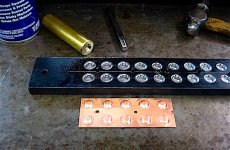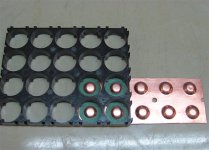APL
100 kW
- Joined
- Aug 6, 2018
- Messages
- 1,113
This thread was split off from the custom ebike build thread, found here:
"APL's V4 Cruiser Build"
https://endless-sphere.com/forums/viewtopic.php?f=6&t=111159
Well, with lots of head scratching and figuring I guess it looks like a 60v pack is going to be the best fit, and not
weigh a ton. Vertical cell options give better space models, but seem a bit unsafe in my opinion,.. cell weight is
best supported from the sides.
A 16S - 12P pack fits nicely and gives me two more P-cells that will fatten up the throttle a bit more. 60v nominal
65v full charge should get the gearing I want, and at 20+ pounds, it's a good in-between weight. (192 cells)
I'm not a big fan of welded cells though, to me it's like buying a new hat and then shooting it full of holes.
Admittedly, welded cells are the best way for production, and the strongest, safest, and compact way to do it,
but I'm a DIY guy, and I don't like the idea of not knowing what shape parallel cells are in, or replacing any single
cell, or all the cells for that matter. Just rubs me wrong.
Solderless is not the best option for many bikes, but just happens to be a shoe-in for this one, given the square box
and the two side plates.
Looking around to see what's available, and has been done first, and I ran across spinningmagnets most excellent
Electricbike.com three part article on the subject, :thumb: .. as well as many other builds here on the ES.
Electricbike: https://www.electricbike.com/introduction-battery-design-1/
After a great crash course on all the do's and don'ts of solderless building, I put on the thinking cap and fired up the
CAD machine.
Here's the latest version,.. changes every day, but you get the picture. Copper rivets, copper series strips, all soldered
of course. Hopping to use a hard-rubber base sheet that will give each cell just enough movement to maintain contact,
and a soft closed-cell rubber that will keep even pressure across the board. Cell spacers on both sides.
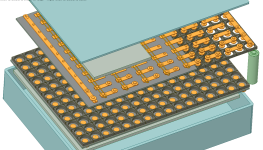
Packed in a fiberglass box that has thru-screws. And the bikes side plates will help keep even pressure as well.
I have to test some of these materials for their fireproof abilities yet, but this is the direction it's going so far.
We'll see what reality has to say about all this. :wink:
"APL's V4 Cruiser Build"
https://endless-sphere.com/forums/viewtopic.php?f=6&t=111159
Well, with lots of head scratching and figuring I guess it looks like a 60v pack is going to be the best fit, and not
weigh a ton. Vertical cell options give better space models, but seem a bit unsafe in my opinion,.. cell weight is
best supported from the sides.
A 16S - 12P pack fits nicely and gives me two more P-cells that will fatten up the throttle a bit more. 60v nominal
65v full charge should get the gearing I want, and at 20+ pounds, it's a good in-between weight. (192 cells)
I'm not a big fan of welded cells though, to me it's like buying a new hat and then shooting it full of holes.
Admittedly, welded cells are the best way for production, and the strongest, safest, and compact way to do it,
but I'm a DIY guy, and I don't like the idea of not knowing what shape parallel cells are in, or replacing any single
cell, or all the cells for that matter. Just rubs me wrong.
Solderless is not the best option for many bikes, but just happens to be a shoe-in for this one, given the square box
and the two side plates.
Looking around to see what's available, and has been done first, and I ran across spinningmagnets most excellent
Electricbike.com three part article on the subject, :thumb: .. as well as many other builds here on the ES.
Electricbike: https://www.electricbike.com/introduction-battery-design-1/
After a great crash course on all the do's and don'ts of solderless building, I put on the thinking cap and fired up the
CAD machine.
Here's the latest version,.. changes every day, but you get the picture. Copper rivets, copper series strips, all soldered
of course. Hopping to use a hard-rubber base sheet that will give each cell just enough movement to maintain contact,
and a soft closed-cell rubber that will keep even pressure across the board. Cell spacers on both sides.

Packed in a fiberglass box that has thru-screws. And the bikes side plates will help keep even pressure as well.
I have to test some of these materials for their fireproof abilities yet, but this is the direction it's going so far.
We'll see what reality has to say about all this. :wink:


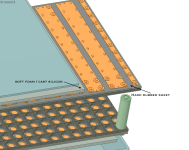
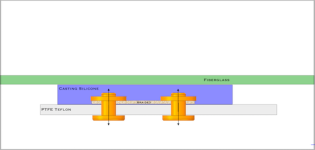
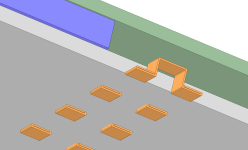

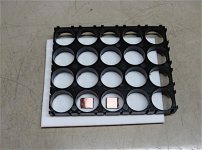
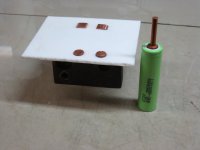
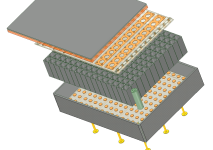
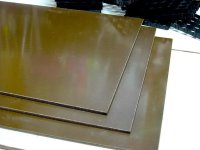
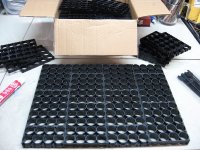
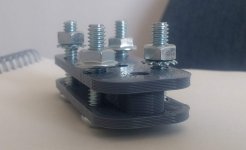

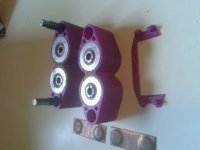
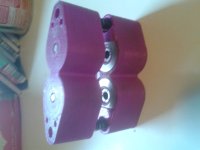
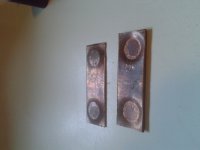
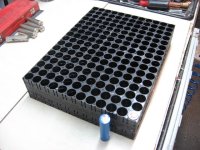
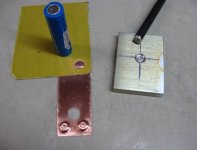
![Steel milled[4343].jpg Steel milled[4343].jpg](https://endless-sphere.com/sphere/data/attachments/170/170885-e9f4784b368023963c93931230d09f26.jpg)
